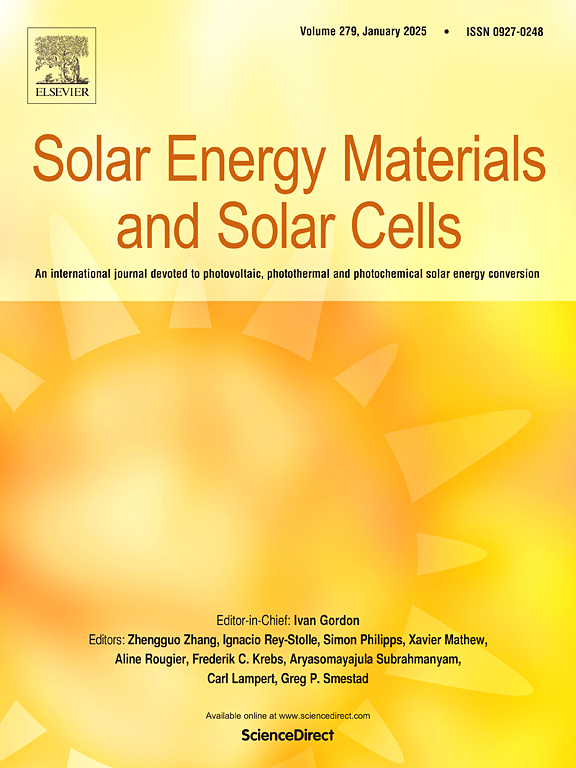Effects and mechanisms of argon flow rate on the quality of cast multicrystalline silicon
IF 6.3
2区 材料科学
Q2 ENERGY & FUELS
引用次数: 0
Abstract
Cast multicrystalline silicon is a well-established crystal growth technique, widely utilized not only as a direct material for photovoltaic cells but also as an effective method for purifying low-purity silicon feedstock. This study, based on a mature industrial process for small-grain cast multicrystalline silicon, examines the impact of varying argon flow rates on material quality. Increasing the argon flow rate enhances heat transfer, reducing crystal growth time, and strengthens melt convection, which mitigates residual stress. Consequently, this reduces the concentration of detrimental defects, extends carrier recombination lifetime, and improves purification efficiency. Furthermore, a higher argon flow rate effectively lowers interstitial oxygen content in the cast silicon. However, excessively high flow rates may compromise the crucible coating, introducing additional contaminants and inclusions into the crystal.
氩气流量对铸态多晶硅质量的影响及其机理
铸造多晶硅是一种成熟的晶体生长技术,不仅是光伏电池的直接材料,而且是净化低纯度硅原料的有效方法。本研究以成熟的小晶铸造多晶硅工业工艺为基础,考察了不同氩气流量对材料质量的影响。增加氩气流量可以增强传热,缩短晶体生长时间,增强熔体对流,从而减轻残余应力。因此,这降低了有害缺陷的浓度,延长了载流子重组寿命,提高了净化效率。此外,较高的氩气流量可有效降低铸硅中的间隙氧含量。然而,过高的流速可能损害坩埚涂层,将额外的污染物和夹杂物引入晶体。
本文章由计算机程序翻译,如有差异,请以英文原文为准。
求助全文
约1分钟内获得全文
求助全文
来源期刊

Solar Energy Materials and Solar Cells
工程技术-材料科学:综合
CiteScore
12.60
自引率
11.60%
发文量
513
审稿时长
47 days
期刊介绍:
Solar Energy Materials & Solar Cells is intended as a vehicle for the dissemination of research results on materials science and technology related to photovoltaic, photothermal and photoelectrochemical solar energy conversion. Materials science is taken in the broadest possible sense and encompasses physics, chemistry, optics, materials fabrication and analysis for all types of materials.
 求助内容:
求助内容: 应助结果提醒方式:
应助结果提醒方式:


